Sudan, South, is a country in eastern Africa. South Sudan became independent in 2011, when it separated from the nation of Sudan. Juba is South Sudan’s capital and largest city. Juba lies on the White Nile River, South Sudan’s most important geographic feature. Most South Sudanese people live near the river or one of its branches.
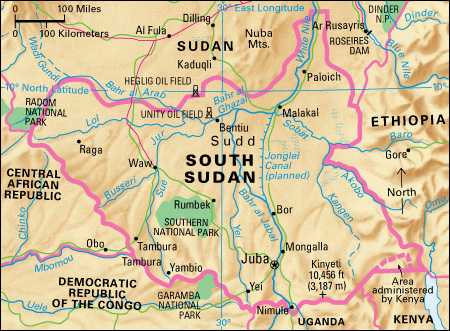
People have lived in what is now South Sudan for thousands of years. Ancient kingdoms flourished there, and Egypt controlled parts of the area at various times. Egypt and the United Kingdom ruled Sudan from 1899. Sudan became an independent nation in 1956.
In January 2011, the people of South Sudan voted to secede (separate) from Sudan. The new Republic of South Sudan became independent in July. South Sudan had been autonomous (self-ruling) since 2005.
South Sudan is one of the least developed areas in the world. Many people lack food, education, or medical care. South Sudan’s infant mortality rate is among the highest in the world. Officials hope money from South Sudan’s oil reserves will eventually improve living conditions.
Government.
South Sudan’s president is the head of state, head of government, and commander in chief of the armed forces. The National Legislature consists of a Council of States and a Transitional National Legislative Assembly. Most legislators are appointed, but some members of the Assembly are elected. The country is divided into 10 states. The states are divided into counties and smaller administrative units called payams and bomas.
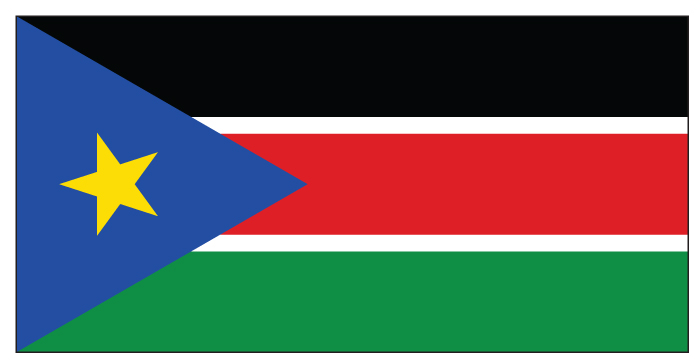
People.
South Sudan is home to many ethnic groups. The Dinka (Jaang or Monyjaan in Dinka) make up the largest group. Other ethnic groups include the Nuer, Shilluk, and Azande. The people of South Sudan speak many different languages. Most people speak Dinka or other African languages. Many speak Arabic. English serves as the main language of trade, government, and education.
Most South Sudanese people follow traditional African religions. Many practice Christianity and some Islam.

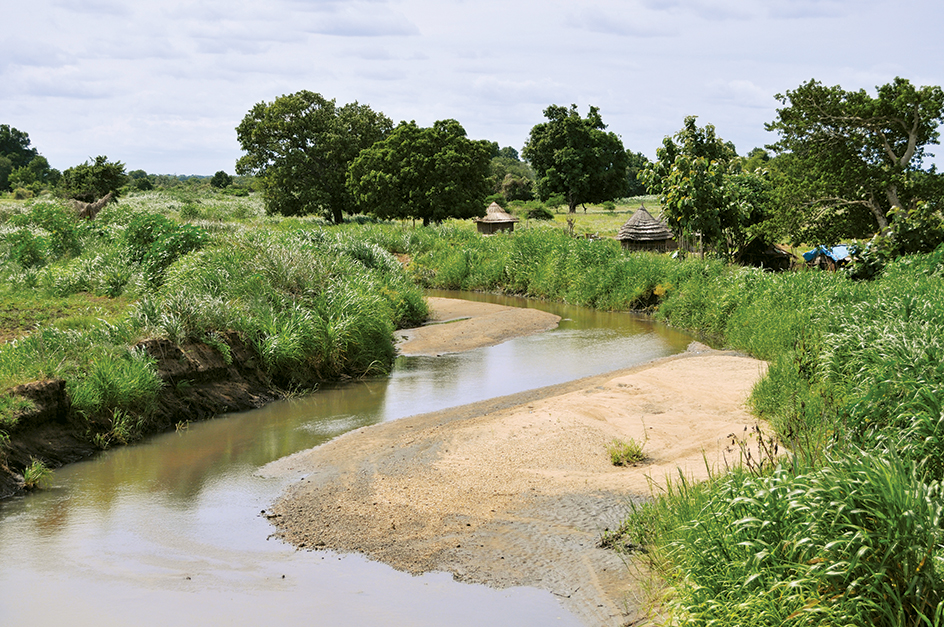
Most of South Sudan’s people live in rural areas. Most of them farm the land or herd animals along the White Nile. Many people practice seasonal fishing. Most farmers own small plots of land. Cattle wealth determines social status in a community. Cattle are often included as part of a wedding dowry. South Sudanese farmers use traditional tools and methods. Many struggle to grow enough food for their families. Some South Sudanese people work as tenant farmers on irrigated land owned by the government or by private corporations in northern Sudan.
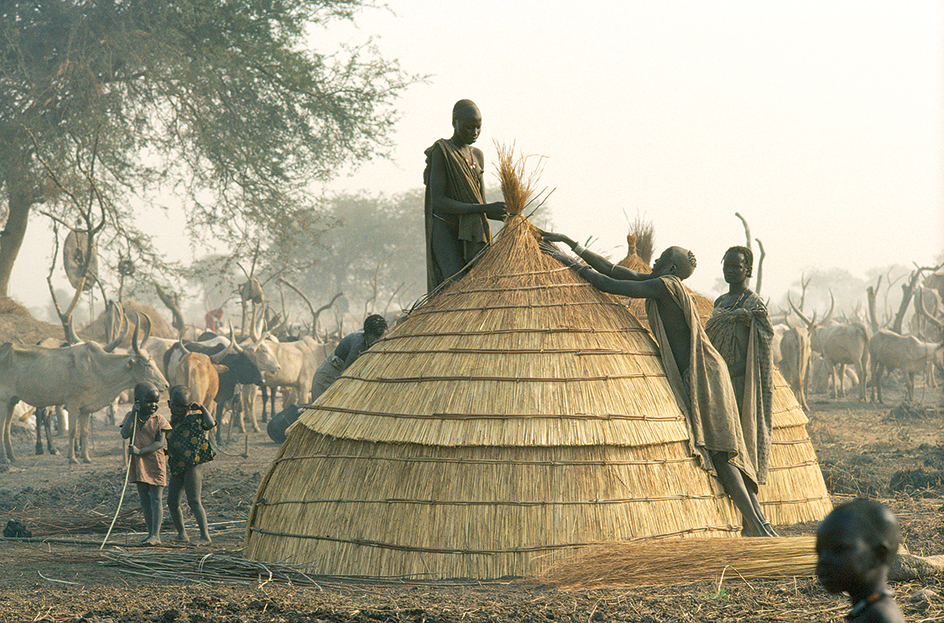
Many rural people live in thatch-roofed shelters called tukuls. Most town dwellers live in apartment buildings or small houses. In poor neighborhoods, houses are much like those in rural areas. Tents and other temporary shelters provide housing for many people on the outskirts of urban areas.
South Sudanese people wear both traditional garments and clothing similar to that worn by North Americans and Europeans. Sandals and shoes are the most common footwear.
Fish is an important food source. Beef, chicken, goat, and lamb are served occasionally, but most people eat little meat. Fruits such as mangos, papayas, and bananas are eaten throughout South Sudan. Wild plants such as water lilies are eaten when food is scarce. Karkadai, a beverage made from the hibiscus plant, is a popular drink. South Sudanese people also drink tea and coffee. Alcoholic drinks such as beer or marissa (a drink made from millet) are popular in South Sudan.
The school system in South Sudan is still recovering from years of religious and ethnic conflict. Few students complete primary school education. South Sudan’s universities include the University of Juba. However, higher education in the country is under reconstruction. About 30 percent of the South Sudanese population can read and write.
Land and climate.
South Sudan’s landscape includes plains, jungles, swamps, and low mountains. The White Nile, which runs through the country, is called the Bahr al Jabel (River of the Mountain) in South Sudan. It floods the flatland to form a vast swamp called the Sudd (Arabic for obstacle).
Dense, junglelike vegetation covers much of South Sudan. Mountain ranges rise along South Sudan’s borders with Uganda, Kenya, and Ethiopia. Rainfall averages about 30 to 60 inches (75 to 150 centimeters) annually.
Wild animals, including gazelles, giraffes, lions, leopards, and elephants, once roamed the country. Antelope species such as kob and tiang are common. Rare animal species such as the giant eland and shoebill stork are also found in South Sudan. Hippopotamuses and crocodiles live along the White Nile’s branches. Much wildlife in South Sudan—including most of its elephant population—was severely reduced by years of conflict.
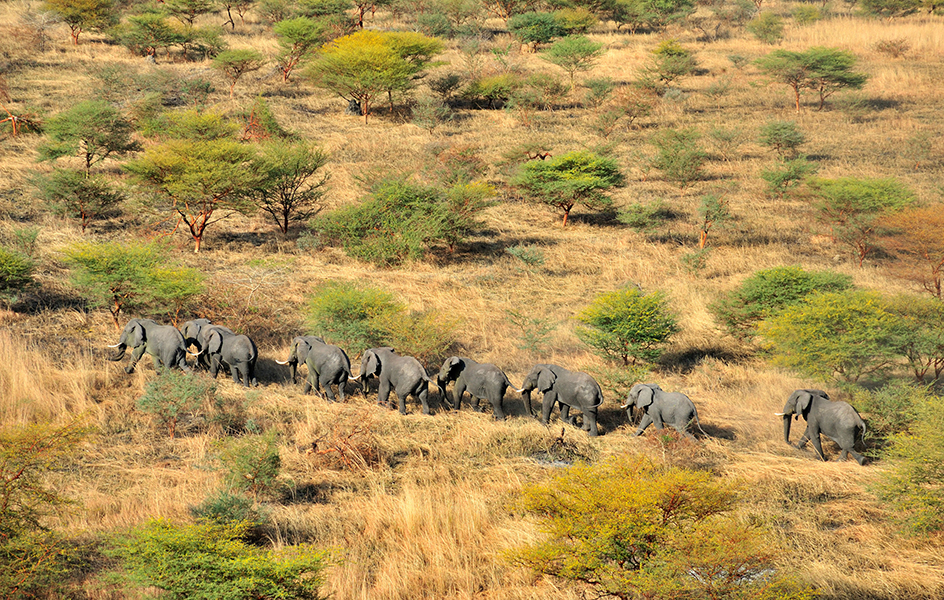
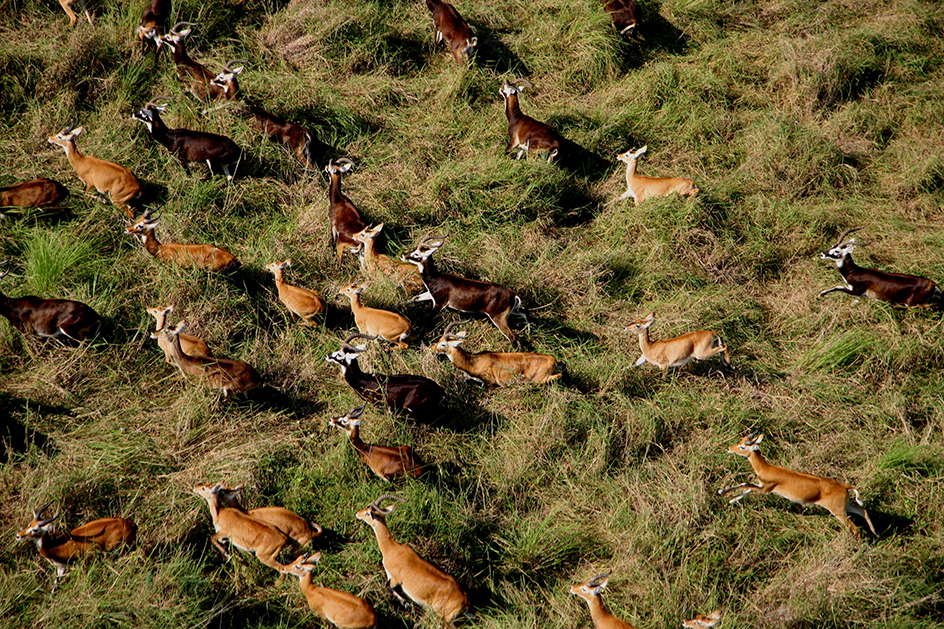
Economy.
South Sudan is rich in natural resources, including oil. However, the nation suffers from poverty and underdevelopment. The White Nile provides some hydroelectric power. The government relies almost entirely on oil for its income. The country’s economy is otherwise dominated by subsistence agriculture. Subsistence farmers subsist, or survive, almost entirely on what they can grow or raise. Farmers raise cattle, goats, and sheep. Important crops include corn, peanuts, sesame, and sorghum. Tropical hardwoods such as mahogany and teak are also important.
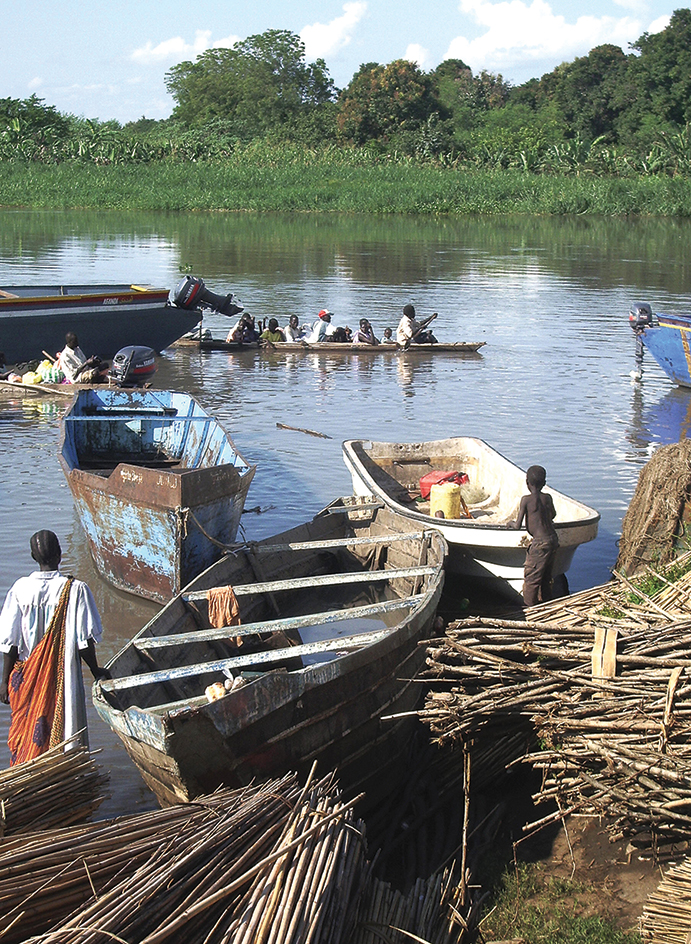
South Sudan has significant oil deposits. The area began exporting oil in 1999, transporting it through pipelines to the Red Sea coast. Forests supply fuel for rural households.
River transportation is important in South Sudan. Most roads are unpaved. Juba has an international airport. A number of towns have small airports. Few of the country’s people own cars. Buses, motorbike taxis (boda bodas), and pickup trucks carry passengers in the cities. Buses and trucks link cities and towns.
History.
South Sudan became independent from Sudan in 2011. For information on the area’s history prior to independence, see Sudan (History) .
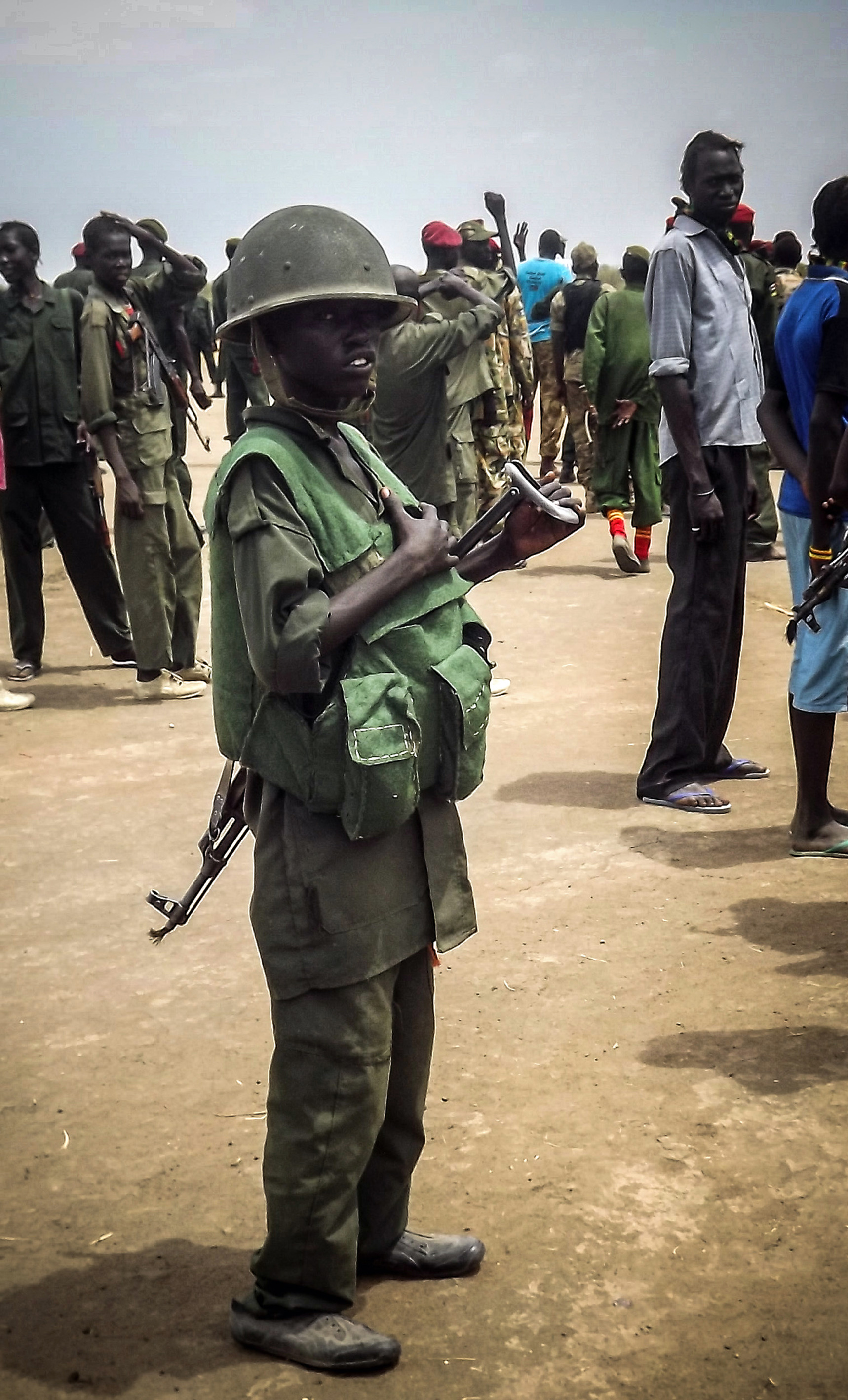
Before South Sudan became independent, religious and ethnic differences had caused violence for many years. In 2005, as part of a peace deal between Sudan’s government and rebels in the south, the country’s National Assembly approved an interim (temporary) constitution. It provided for power to be shared between northerners and southerners. It also established a regional government in southern Sudan. The regional government had a large degree of self-rule.
In January 2011, the people of South Sudan voted to break away from the rest of Sudan. The Republic of South Sudan became independent on July 9, 2011.
In December 2013, violence in Juba and other parts of South Sudan killed thousands of people. President Salva Kiir, an ethnic Dinka, blamed the violence on an attempted coup by former Vice President Riek Machar, an ethnic Nuer. The Dinka and Nuer groups—South Sudan’s largest—are long-time rivals. Thousands more died in 2014 as the two sides continued fighting. An August 2015 peace agreement ended the conflict. The two sides then began constructing a transitional government to rule the country. Fighting erupted again in July 2016, however, killing hundreds of people and displacing thousands of others. Later that month, President Kiir replaced Vice President Machar with General Taban Deng Gai, a personal ally of the president.
In 2017, continued fighting and economic problems created famine conditions in South Sudan’s northern Unity state. There, fighting had caused rapid inflation and disrupted agriculture, trade, and transportation. In September 2018, the government and some rebel forces signed a peace agreement that committed them to power sharing. However, many South Sudanese people continued to suffer from hunger and incidents of violence in 2019. In February 2020, Kiir and Machar formed a coalition government.
